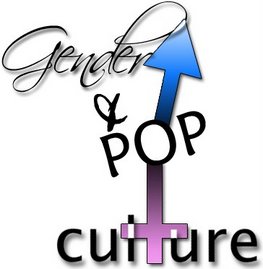All images, especially the repetition of images, have meaning. Many viewers watch the hit television show “Desperate Housewives” but fail to discuss the empowering and disempowering images being shown to them. Since “the points of view of the creators of the show are being constantly and attractively cast into the public arena,” it is impossible for the viewer not to be absorbing the ideas the creators of the show have about gender and popular culture (Lull, 1995, pp. 62). As a result, it is important to look at what images are empowering and disempowering in order to understand the impact the show “Desperate Housewives” can potentially have on its viewers.
One of the most empowering images shown on the show is when the character of Lynette complains to her friends about motherhood. Women are typically “governed by principles, rules, and laws they believe operate in their best interests, even though in actual practice many of them do not” Lull, 1995, pp.63). The inability to express dissatisfaction with the role of motherhood has resulted in women feeling trapped. If a woman expresses her discontent, people think of her as a terrible mother. However, when Lynette expresses some of her doubts about motherhood, she is comforted by her friends and told that they too have struggled and not always loved being mothers. This image is extremely empowering, for it shows that it’s normal and fairly common to not always enjoy being a mother. However, this image is disempowering because it shows the women blaming themselves. Some of the blame should go toward the fathers for not helping out as much as they should.
Another empowering image on the show is having the character Lynette work outside the home while her husband Tom stays home with the children. Although it is relatively common for a woman in the United States to be employed, it is not very common for a man to be the primary caregiver while his wife works. This message has the potential to be very empowering. It breaks rigid gender roles and shows that fathers can be effective at child-rearing. It also shows that woman has the potential to earn more money than her husband and be the sole breadwinner. However, when Tom decides to go back to work due to the fact that he feels he is being emasculated, the empowering image disappears. Men are told that they can be temporary “house-husbands,” as long as they complain bitterly about it and make it known to their wives that the work is inferior and is meant for women.
The fact that the five desperate housewives are being portrayed as sexual beings in their forties can be seen as an empowering message. Typically, women are seen as asexual and are not the primary characters on television shows once they are considered “middle-aged.” It gives women in their forties the power to feel sexy and to have sexual feelings as they get older. However, the only reason why these women are allowed to be sexual is due to the fact that they are extremely thin and attractive. The majority of middle-aged women (and even women in their twenties and thirties) do not look the way the five main characters on the show do. As a result, this message doesn’t really apply to most women. Women in their forties can be sexual… as long as they look like they’re in their twenties. This takes away power from women and makes them believe that men will only want them if they look more or less like models.
This analysis has only skimmed the surface of all the empowering and disempowering images on the show. Despite the fact that the show tries to be empowering, a lot of its messages are reinforcing the counterhegemonic norm of women being the subordinate gender. The show tries to empower women by showing women with careers, intelligence, humor, beauty at age forty, etc. Unfortunately, the show falls short on its empowering messages to women. When I used to watch the show, I thought the show had almost nothing but empowering images for women. However, I now realize that I thought the show was so empowering due to the fact that seeing empowering images of women in the media is such a rarity. It’s important for people to pay attention to all the images of power throughout the media in order to understand them and attempt to change the less empowering ones.
Lull, James. “Hegemony”. Dines, Gail. Gender, Race, and Class in Media, 61-65.
Friday, May 4
Subscribe to:
Posts (Atom)


